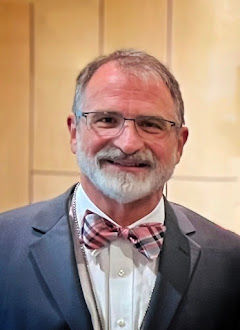Hope is Alive
1 Peter 1:3-9[1]
Sixteen
years ago my son Derek and I visited two canyons in the Southwest. We spent a
day at the Grand Canyon with about 12,000 other people. The sight of the canyon
was truly impressive; it is one of those places on earth whose grandeur cannot
be captured by photography. We also spent a day at Chaco Canyon in Northwestern
New Mexico. You may not have heard of
it. It is the site of the oldest ruins in the U. S. It’s about 20 miles off the
pavement along a bumpy dirt road.
Archaeologists
think that Chaco Canyon was first occupied about the year 500 by farmers. By
about the year 800 they were building the crescent-shaped pueblos for which the
site is famous. The pueblos were built along lines marked out by the sun and
the moon, as well as perfect East-West and North-South lines. The discovery of
many pre-historic roads that fan out to the surrounding area suggests that
Chaco Canyon may have stood at the center of a fairly large and well-developed
culture, known today as the Early Puebloan People. They flourished there for
another 350 years, until they were forced to leave by an extended drought. Most
historians would agree that they founded the Pueblo Cultures that still thrive
in the desert Southwest.
If
you’ve ever been to the Grand Canyon, you can perfectly understand why so many
people go there. But if you visited Chaco Canyon, you’d have to ask yourself
why in the world anyone would want to visit, let alone live there. It’s a stark
and barren landscape. There’s really nothing much to commend it as a place to
build a fairly sophisticated complex of pueblos. We can only speculate at this
point, but some have suggested that the unique geographical and astronomical
alignment of the canyon may have related to ancient Puebloan religious beliefs.
As
Derek and I wandered the ruins of Chaco Canyon that day—with about 12 other
people as opposed to 12,000!—I found myself wondering what it was that enabled
men and women to do what it took to survive the harsh conditions of that time
and place. It’s hard enough to survive what life has to offer in the relative
comfort of what we call “civilization.”
If
we took the time to study what life was like for the early Christians, we might
ask the same question. As Peter says in his letter, they suffered for their faith
in a wide variety of ways—ranging from ridicule to hostility, and from
ostracism to lynching! In the midst of their hardships, the Apostle Peter
reminded them that the Easter faith offered them a “living hope.” Their hope
was “alive” because it is a hope that comes from the life of the risen Christ
who defeated death. Their hope was alive because it is a hope that comes from
the promise of never-ending life in God’s new creation and “brand-new” life
here and now through God’s Spirit. Their hope was alive because it is a hope
that nothing can quench—not doubt, not hostile enemies, not even martyrdom,
which they suffered on occasion. I believe they were able to endure their
hardships because their hope was alive!
But
there had to have been times when those First-Century Christians asked
themselves why they had to suffer so much if all that was true. I think part of
the problem is that our faith in the resurrection and our hope of new life
simply exceed our ability to really and truly understand. But the fact that we
may not be able to get a handle on them doesn’t mean that our faith and hope
are not just as alive today as they were in Peter’s day.
Even
though we may not be able to fully grasp our “living hope,” the good news of
Easter is that the new life of the risen Christ is something that takes hold of
us and changes us forever. That’s the basis for our hope and faith—not that we
can grasp everything there is to know about God and faith and eternity, but
rather that God has grasped us through the living presence of our Lord and
Savior Jesus the Christ. The hope of Easter, that new life will one day
transform everything and everyone, keeps our hope alive.
And as Peter assured those
first Christians doing their best to live their lives in the midst of the
struggles of their world, he continues to assure us that the experience of
being “grasped” by God is one that cannot be diminished by time, or doubt, or
even death. It is an experience that
transforms us for good because we are from then on “kept safe by the power of
God” (1 Peter 1:5, TEV). We can face our hardships with a hope that is alive!
[1] ©2020 Alan Brehm. A sermon delivered by Rev. Dr. Alan
Brehm on 4/19/2020 at Hickman Presbyterian Church, Hickman, NE.


No comments:
Post a Comment